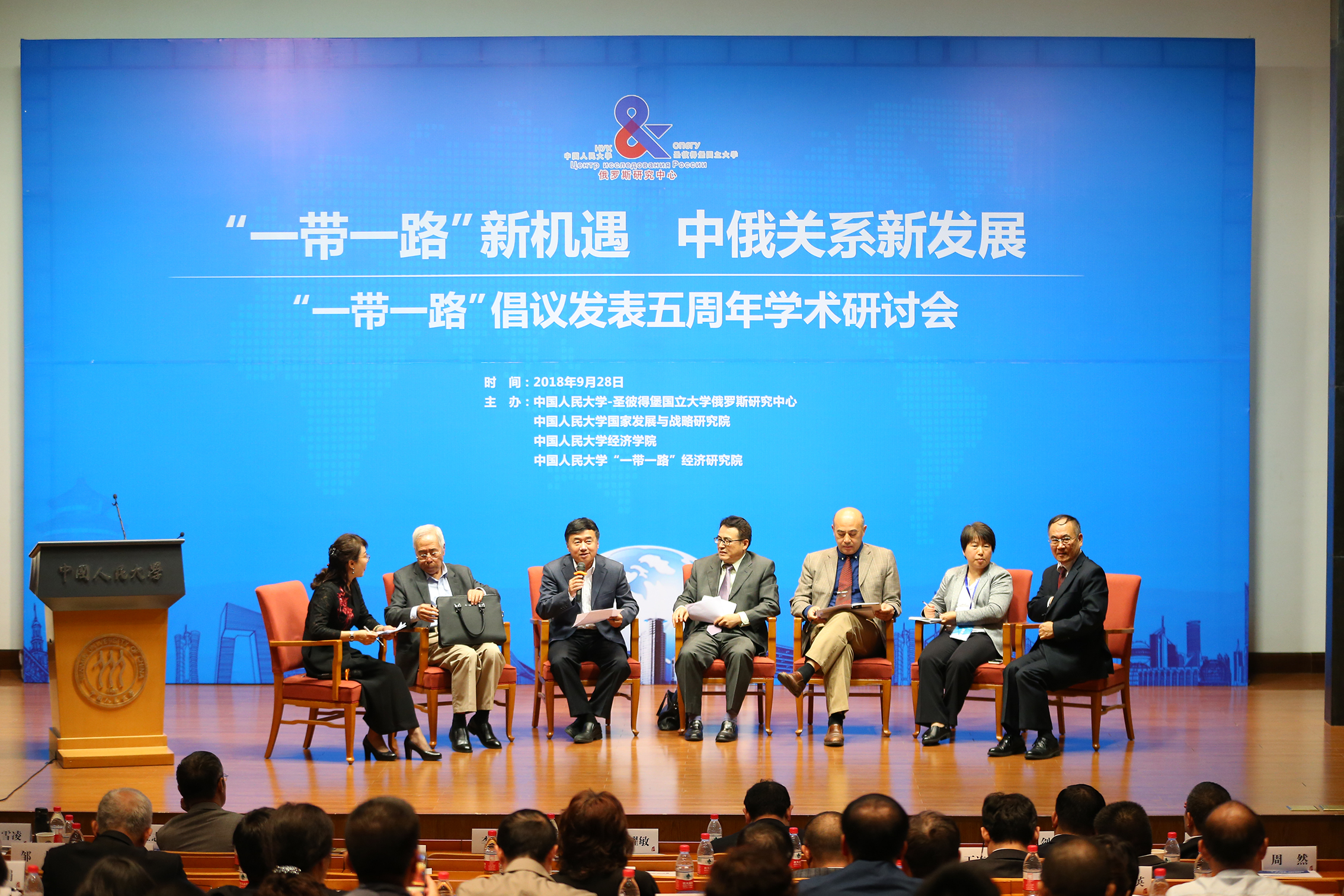B&R expands cooperation between China, Russia

Recently, a seminar titled “B&R Brings New Opportunities; China-Russia Relations Embrace New Growth” was held at Renmin University of China (RUC) in Beijing, celebrating the fifth anniversary of the B&R initiative. Photo: RUC
On Sept. 28, a symposium featuring the fifth anniversary of the “Belt and Road” initiative (“B&R”) was held in Beijing. The theme was “B&R Brings New Opportunities; China-Russia Relations Embrace New Growth.”
In practice the B&R initiative is pursuing peaceful development and mutually beneficial cooperation, meeting the aspirations of many countries to strengthen connectivity for common development, and responding to global economic risks and challenges.
Chang Xuhong, a counselor of the Department of European-Central Asian Affairs at China’s Ministry of Foreign Affairs, said that so far, China has signed 118 B&R cooperation agreements with 103 countries and international organizations. The total trade volume with relevant countries has exceeded 5 trillion US dollars, and a number of infrastructure cooperation projects have been implemented.
This is the year of China-Russia local cooperation and exchange. Since 2018, China-Russia high-level exchanges have become closer and cooperation has maintained a strong momentum, Chang said. In the first eight months of this year, China-Russia trade volume reached $67.5 billion, up by 25.7 percent from the same period last year, and it is expected to reach $100 billion by the end of the year. Meanwhile, new trade cooperation, such as China-Russia cross-border e-commerce, has been growing rapidly, and a number of high-tech strategic projects are also underway.
Sun Zhuangzhi, director of the Institute of Russian, East European and Central Asian Studies at the Chinese Academy of Social Sciences, said that the biggest achievement of the B&R is guiding new modes of cooperation. To be specific, some important principles proposed by China are being demonstrated and enhanced by B&R construction. Countries and organizations have leveraged their advantages based on local conditions to steadily advance bilateral or multilateral cooperation. Differences are recognized and respected, including political and cultural differences.
Cooperation has been advanced by multiple actors at various levels, emphasizing “five-way connectivity”—policy, infrastructure, trade, financial and people-to-people connectivity—and extensive cooperation in economy, politics and culture. The B&R is open, inclusive and compatible with many other mechanisms. It values long-term sustainability and integration with national strategic plans, Sun said.
Li Fenglin, former Chinese ambassador to Russia and honorary chairman of the RUC-St. Petersburg State University Center for Russian Studies, said that the Greater Eurasian Partnership proposed by Russia and China’s B&R initiative have challenged traditional Western diplomatic thinking and provided new visions for the rebuilding of international order and global and regional cooperation.
Li also said that China and Russia should build on the present and look to the future, formulating practical and long-term plans to complement each other, to facilitate mutually beneficial cooperation and to build a community with a shared future. To this end, it’s important to improve cooperation models, expand cooperation areas, encourage innovation, and help small and medium-sized enterprises as well as emerging industries to grow, particularly e-commerce businesses.
(edited by SHAO YIJIA)
